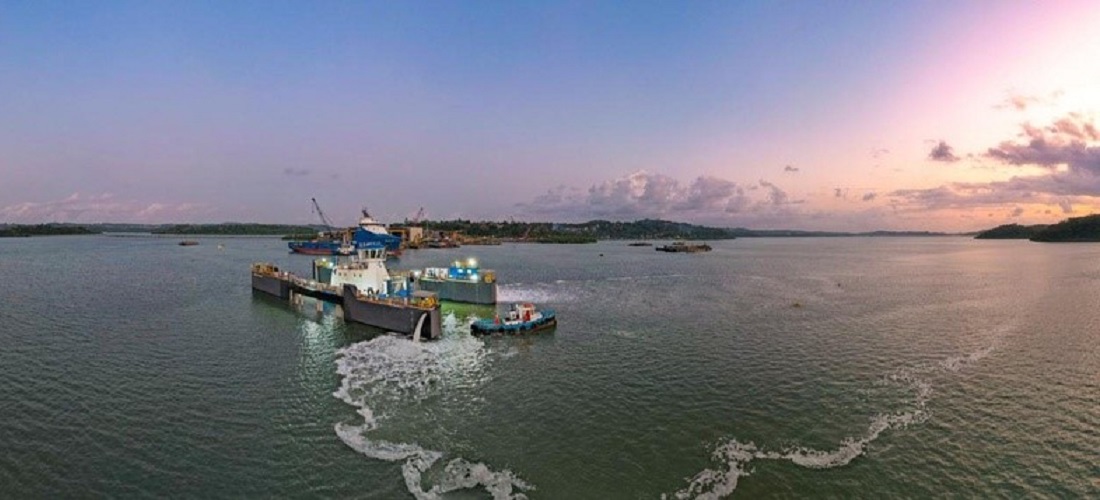
Waterway use grows 5.36% in Brazil
Feb, 22, 2023 Posted by Gabriel MalheirosWeek 202309
Optimistic projections were confirmed, and cargo transport by waterways increased by 5.36% in 2022 compared to the previous year. The information comes from the National Waterway Transportation Agency (Antaq)’s annual statistical balance report. Inland transportation moved 38.4 million tons in total.
The Paraguay hydrographic region went through a 45.9% increase in the total amount of cargo transported. On the other hand, the southern Atlantic and Paraná waterways, which complete the list of Brazilian hydrographic regions, recorded a drop of 31.9% and 27.4%, respectively.
The commodity that showed the highest percentage growth between January and December was corn. In 2022, 22.1 million tons of the cereal were transported between domestic ports, an increase of 87.2% compared to 2021. Petroleum oil and derivatives also saw increases of 14.4%, with 10.2 million tons transported over the 12 months of 2022.
Projects and potential
According to Antaq’s general director, Eduardo Nery, at least two critical projects to develop the waterway sector are underway: the Lagoa Mirim Waterway concession in Rio Grande do Sul state and the improvement of navigation conditions north of the Amazon River.
“We are giving top priority to these projects (Lagoa Mirim and Barra Norte) (…) And there are other projects that we are studying and are in the pipeline, but still depend on DNIT (National Department of Transport Infrastructure) interventions, such as the waterway of the Paraguay River and the Tocantins River waterway,” he said at an Antaq press conference.
The potential of Brazilian waterways is also highlighted by logistics specialist Pierre Jacquin, from project44, a technology startup focused on the sector. However, he ponders that transporting cargo by inland navigation still plays a small role in the national logistics scene.
“Inland navigation can contribute significantly to the promotion of multimodal operations, which in turn can reduce logistical costs in Brazil, which represent 12.5% of the country’s GDP, against 10% of European GDP and 8% of North American GDP. Progress is expected in public policies to encourage waterway use. It is an excellent cost-benefit modal.”
Details
Amazon Waterway Region
Main cargo loads: soybeans (31% of the total), corn (28%), oil products (16%), box semi-trailers (11%), and others (14%).
Tocantins-Araguaia Waterway Region
Main cargoes: corn (32% of the total), soybeans (25%), box semi-trailers (24%), oil derivatives (7%), and others (12%)
Paraguay Waterway Region
Main cargoes: iron ore (92% of the total), soy (7%), and others (1%)
South Atlantic Waterway Region
Main cargoes: pulp (43% of the total), fertilizers (12%), soybean meal (9%), containers (8%), and others (28%)
Tietê-Paraná Waterway Region
Main cargoes: corn (39% of the total), sand (37%), soybeans (16%), soybean meal (7%), and others (1%)
Source: A Tribuna
To read the original reporting, please acess: https://www.atribuna.com.br/noticias/portomar/movimentacao-sobe-536-em-hidrovias-no-brasil
-
Ports and Terminals
Feb, 11, 2022
0
Privatized refinery favors exporting over providing fuel to vessels in Bahia
-
Meat
Mar, 07, 2023
0
Mexico to allow Brazilian beef imports amid anti-inflation struggle
-
Ports and Terminals
Jun, 06, 2023
0
Temape announces BRL 130 million investment to expand Suape Port terminal
-
DW 2020 EN
Jan, 27, 2020
0
DATAMARWEEK 28 JANUARY 2020


